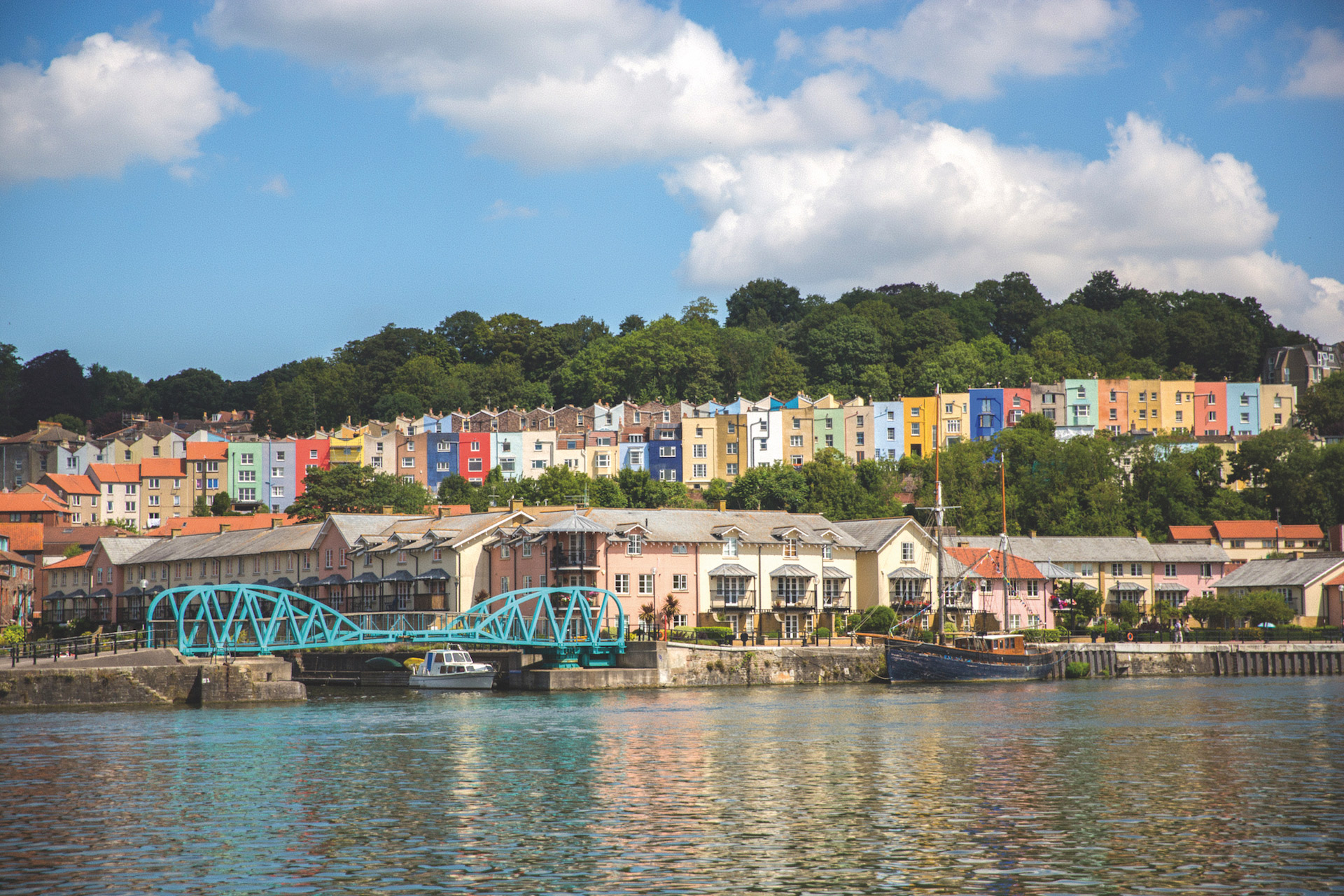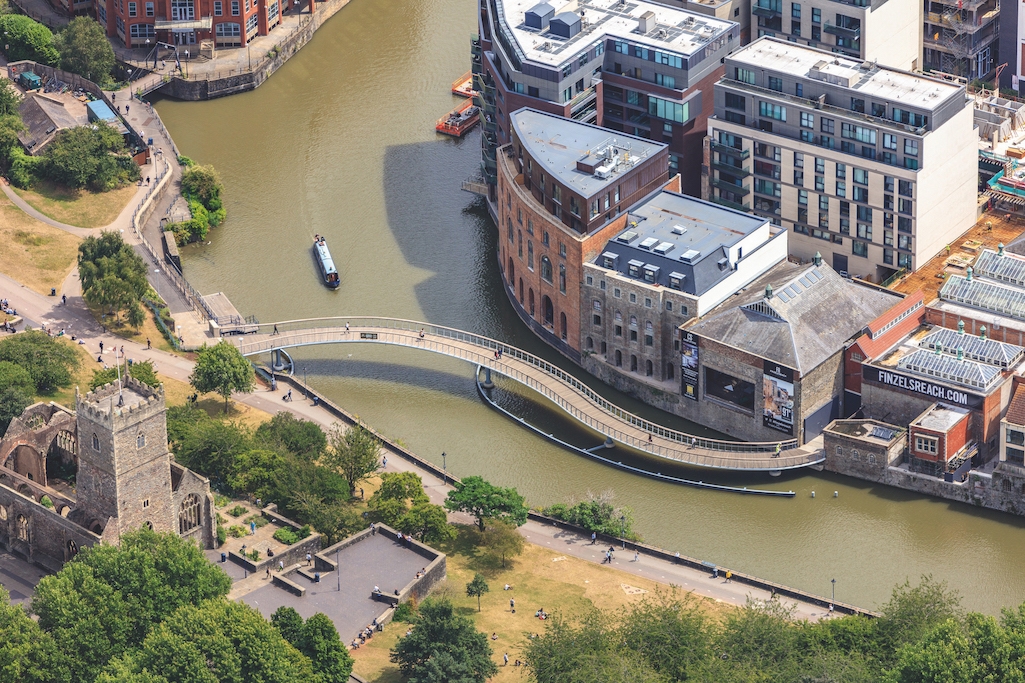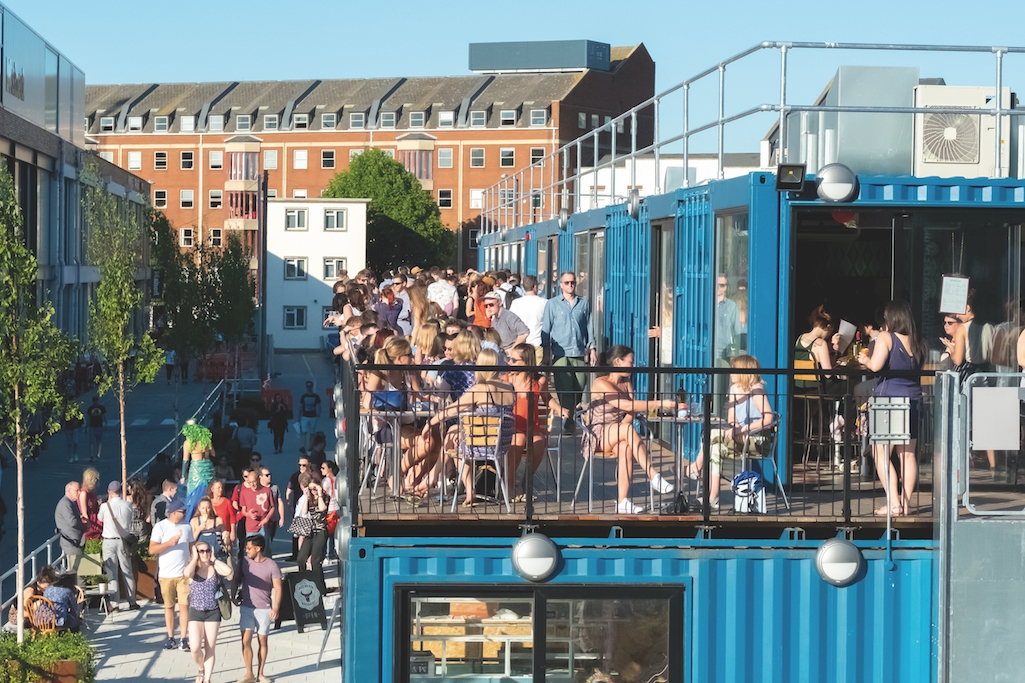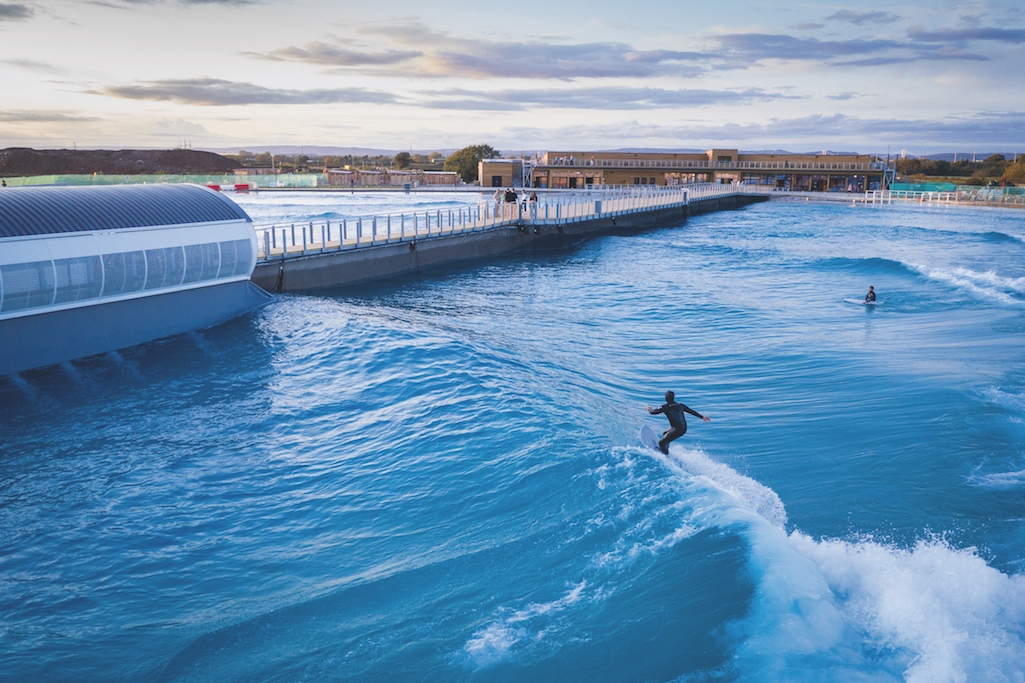
- HOME
- CTH LIFE
Let’s Move To Bristol
Will Londoners be considering a Covid-shuffle to a smaller, greener city? A move to Bristol fits that bill
By | 3 years ago
The recent months have us all thinking we’d like to move to somewhere quieter, greener and with a more balanced pace of life. Bristol, in the UK’s idyllic South West, could be just the place you’re looking for
Thinking Of A Move To Bristol?
For centuries Bristol has been a distinguished melting pot, home to merchants, engineers, artists and musicians. Now, period houses, leafy squares and regenerated warehouses are attracting young families from London who find the Home Countries just a little too stuffy and like the idea of walking or cycling to work. ‘In Bristol, Londoners are able to achieve a better work-life balance while still feeling they are part of something exciting,’ explains Jo Henry, West Country specialist at Jess Simpson Property Search. ‘There’s a vibrant music and food scene and the city is the hub for the financial and tech industries in the South West, meaning they don’t have to worry about losing their London income,’ she says.
Over the past decade a steady flow of London families have made the move to Bristol; according to Land Registry figures, the average house price has grown by at least 50 per cent in the past six years, while last year, Bristol was the most searched-for place on RightMove outside London.
‘We moved here for more space and easy access to the coast and countryside,’ explains Louise Ronan, a management consultant, who moved to Bristol from Streatham, South London, with her husband, Benjamin, a solicitor, two years ago. ‘Our companies both had offices in Bristol; it made sense for us to relocate.’
Despite the price growth, Bristol still offers good value for money compared to London; at £292,000, the average price for a terraced house is about 40 per cent cheaper than it is in the capital, and living costs are more affordable, too. Yet when the Ronans need to be in London, the fast train from Bristol Parkway to London Paddington takes just 68 minutes, ensuring they can work in the capital all day and return home for their children’s bedtime. There’s also an international airport just 20 minutes outside the city, which Ronan uses to visit her team in Amsterdam. ‘You can easily live in Bristol and still travel regularly to London and overseas on business,’ confirms Henry.

Finzels Reach, Bristol’s new waterfront development
Increasingly, though, Bristol is becoming a media and financial hub in its own right. The BBC, Rolls-Royce, Hargreaves Lansdown and Airbus all have headquarters in the city; Channel 4 is moving to Finzels Reach, Bristol’s new waterfront quarter and there’s a thriving financial services industry.
There is also a strong emphasis on sustainability, which appeals to the Ronans; in 2015 it was the UK’s first European Green Capital, welcoming the first-ever bus powered by human waste. There are also four city farms, a comprehensive cycle network, and Hydrogenesis, an 11 metre steel hydrogen-powered zero emissions fuel cell boat that operates on Bristol’s historic floating harbour. The city is also home to the Soil Association and Sustrans, the sustainable transport charity behind the development of the National Cycle Network.
Bristol is also rich in terms of culture. Banksy, Damien Hirst, JK Rowling and John Cleese were born in Bristol and the city is home to the Bristol Old Vic theatre school, whose alumni includes David Walliams, Patricia Routledge and Daniel Day Lewis. Theatres include the Old Vic (which has a renowned restaurant), Hippodrome and Bristol Theatre, there are several art galleries and museums including contemporary gallery, the Arnolfini, and two world class universities: University of Bristol and the University of the West of England.
There’s also an evolving foodie scene with fine dining restaurants such as Adelina Yard in Bristol’s Welchback district, and specialist gastro areas such as Cargo and Cargo 2, in stacked shopping containers on the quayside at Wapping Wharf, offering a variety of independent food and drink outlets.

Cargo 2 at Wapping Wharf, Bristol. @Jon Craig Photos
For families leaving London, the schools are another major incentive. Bristol offers a range of outstanding primaries, as well as high scoring state secondaries such as Redland Green School and Colston’s Girls’ School. There is also a number of excellent private schools including the co-educational Bristol Grammar School and Clifton College, Badminton School for girls and the boys’ school, Queen Elizabeth’s Hospital.
Popular areas for families within the city include the undulating suburbs of Cotham and Redland are shared with students and have a wealth of independent shops such as the 100-year-old Cotham Hardware and award-winning deli, Papadeli. Also sought-after are Montpelier, Leigh Woods and Abbots Leigh and the regeneration schemes in up-and-coming BS2 postcode to the north and east of the city centre, where there are independent shops and a city farm.
St Andrews, a residential area to the north-east of the city, is also popular, in particular the streets off Gloucester Road, a busy high street with independent shops and bars, not dissimilar from Northcote Road or Marylebone High Street in London. The Ronan’s paid just over £750,000 for their five-bedroom early Victorian home not far from the Somerset Country Cricket Ground. ‘It’s the kind of house we would never have afforded in London; the garden is enormous and there’s still the chance to develop the attic,’ Louise says.
It’s Clifton, however, that holds a particular draw for wealthy Londoners with prices rising 66 per cent in 10 years, according to Knight Frank. ‘Its village centre has become seriously grown up and caters perfectly for the changing face of the local market,’ says Henry. ‘Here you find The Ivy, Fired Earth, Farrow and Ball, several boutiques and many quirky, independent outlets.’
It’s also perfectly possible to live in the countryside outside Bristol and commute to the city within 15 or 20 minutes. The South Gloucestershire villages of Frampton Cotterell, Frenchay, Tockington, Alveston and Winterbourne, which are just a short drive from Bristol Parkway, appeal to those commuting back to London. According to Henry, buyers are also looking to the less populated villages to the South of Bristol such as Chew Magna, Chew Stoke and The Harptrees, which offer an unspoilt rural setting close to the cultural facilities and business opportunities of Bristol.
Since the Ronan’s made the move to Bristol, three other couples they know from London have done the same, as well as Louise’s parents, who have both spent all their lives in the capital. ‘In London, all we had within walking distance was slides, swings and cafes,’ Louise says. ‘Here our horizons are so much wider.’
Move To Bristol For…

Hang ten at The Wave, Bristol’s man-made surfing lake
A waterside tour
Enjoy coffee and croissants at Spoke & Stringer then take the ferry crossing to SS Great Britain and on to the M Shed and the Arnolfini Art Gallery.
A cultural night out
Dine at 1766 Bar & Kitchen before watching a show at Bristol Old Vic.
A decent cup of coffee
Full Court Press on Broad Street serves the city’s best coffee.
A casual dinner
Margaritas, taquitos and tostadas at Masa + Mezcal, a modern Mexican restaurant in trendy Stokes Croft.
Sunday brunch
Freddy Bird’s Littlefrench in Westbury Park is affordable, unpretentious and delicious .
Surf’s up
Test your board skills at The Wave, a 180m long surfing lake with waves up to 6.5ft just outside Bristol.
Movie night
Settle into a film at Everyman Bristol in Clifton, followed by dinner at Wilson’s, a small bistro in Redland.
Want To Move To Bristol? Check out the foodie scene…
The Best Places to Eat in Bristol: A Foodie’s Guide



